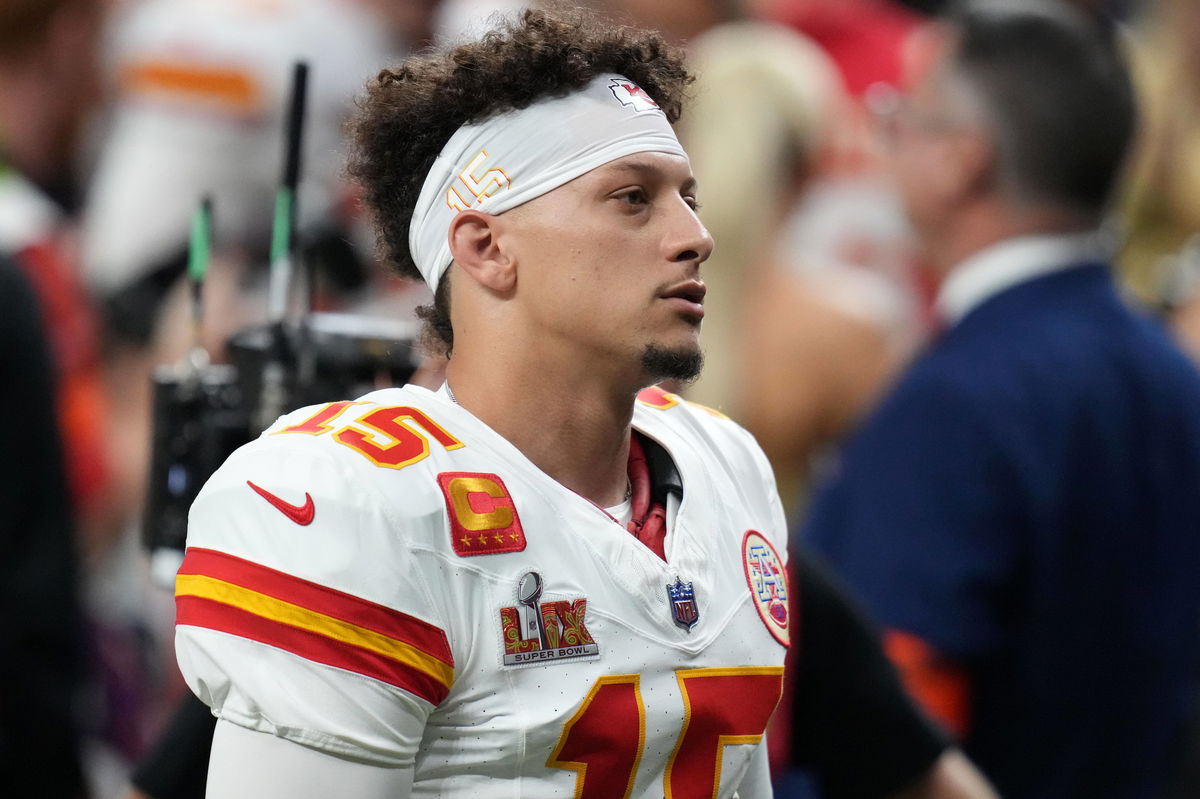
Imago
NFL, American Football Herren, USA Super Bowl LIX-Kansas City Chiefs at Philadelphia Eagles Feb 9, 2025 New Orleans, LA, USA Kansas City Chiefs quarterback Patrick Mahomes 15 takes the field before Super Bowl LIX against the Philadelphia Eagles at Caesars Superdome. New Orleans Caesars Superdome LA USA, EDITORIAL USE ONLY PUBLICATIONxINxGERxSUIxAUTxONLY Copyright: xKirbyxLeex 20250209_mcd_al2_37

Imago
NFL, American Football Herren, USA Super Bowl LIX-Kansas City Chiefs at Philadelphia Eagles Feb 9, 2025 New Orleans, LA, USA Kansas City Chiefs quarterback Patrick Mahomes 15 takes the field before Super Bowl LIX against the Philadelphia Eagles at Caesars Superdome. New Orleans Caesars Superdome LA USA, EDITORIAL USE ONLY PUBLICATIONxINxGERxSUIxAUTxONLY Copyright: xKirbyxLeex 20250209_mcd_al2_37
In 2025, NFL front offices have doubled down on the idea that a franchise quarterback and his protection are non-negotiable expenses. Look no further than the Chiefs‘ gamble to shield Patrick Mahomes at any cost or Cincy’s all-in bet on Joe Burrow with elite receivers. Atlanta is still tied to Kirk Cousins, but he’s still landed a splashy deal. The league’s top contenders are funneling historic sums into offense. The real question, though, is whether this spending spree translates into the dominance it’s designed to buy.
Watch What’s Trending Now!
1. Kansas City Chiefs—$176.43 million
As assumed, Kansas City leads all offenses in spending, allocating over $176 million. It’s more than 63% of its total cap. Interestingly, Mahomes accounts for 10.1% alone ($28M), yet their O-line is the real budget hog (30.7%). Tight ends, thanks to Travis Kelce’s impact, pull a 10.5%. And wideouts claim 8.1%. Surprisingly, despite this spending, the PFF grades them 78.0 (14th), which suggests they aren’t extracting elite efficiency. Andy Reid’s priority on pass protection and versatility seems palpable. But even though Mahomes’ contract is manageable, the line’s cost and mid-tier grading reveal some underperformance relative to investment.
ADVERTISEMENT
2. Atlanta Falcons—$174.73 million
The Falcons are right behind KC, channeling 62.6% of their cap into offense. Cousins (might get traded) alone swallows a whopping 14.3% with a $40M cap hit. Wideouts, on the other hand, pull 13.1% and the offensive line. 21.9%. However, unlike KC, Atlanta boasts a top-3 PFF offensive grade of 88.3, indicating that the spending is indeed translating into production. Tight ends (6.8%) and RBs (3.9%) are budget-friendly by comparison, signaling an emphasis on aerial efficiency. But with Cousins’ future in Atlanta still in limbo, we’ll see how the cap hit turns out in the coming months.
ADVERTISEMENT
3. Cincinnati Bengals—$173.39 million
The Bengals have committed over $173 million in offensive cap allocation. And it’s pretty understandable. Burrow’s massive $46M hit (16.5%) leads all QBs in this list. Wideouts, on the other hand, consume a striking 20.6%, easily the most significant percentage here—no surprise for a team that invested heavily in Ja’Marr Chase and Tee Higgins. Despite that, their O-line claims just 15%, the lowest among the top five, which has been a persistent criticism. Their PFF grade (78.7, 12th) suggests room for improvement, given the massive spending on wide receivers. The vision is clear: Cincy’s is all about explosive weapons, even if it means a leaner budget for protection up front.
ADVERTISEMENT
4. Los Angeles Rams—$171.39 million
The Rams, ranked 4th in this list, allocate 61.4% of their cap to their offense. And no doubt, Matthew Stafford is the biggest driver. We’re talking about his $47M hit (17%) that tops this group. Unlike the Bengals, LA’s offensive investments are more balanced. Wideouts swallow 10.9%, tight ends 7.9%, and O-line 20.1%. Meanwhile, the running backs claim 3.8%, reflecting a pass-first approach. But what’s more striking is that despite massive quarterback spending, the PFF ranks them 9th (79.9 grade), suggesting the efficiency is not elite. With Stafford’s contract, the wideout duo of Nacua and Samuel, and the mid-tier supporting cast, the offensive spending justifies the hefty allocation. But not dominant, as per PFF.
5. Detroit Lions—$164.98 million
Last but not least, the Lions round out the top five, allocating 59.1% of their cap to the offense. But if we zoom in, it’s still a substantial commitment. Jared Goff’s $32.6M hit (11.7%) is more modest than what we saw of Burrow or Stafford, offering flexibility to the protection and pass-protection crew. The O-line absorbs 24.2% of its cap, underscoring a trenches-first philosophy. The spending on the wide receivers and running backs is also significant. We’re talking about 12.8% and 6.1%, respectively, supporting a balanced attack. No wonder PFF grades them 88.2%, the second-best, indicating an excellent ROI on this spend. One can argue that it’s one of the most balanced offensive sides entering the 2025 season.
ADVERTISEMENT
That said, the NFL teams are all ready to kick off their 2025 season in less than a couple of months. With a massive quarterback spending and acquiring a top-tier supporting crew, how will their season turn out? That we shall see.
ADVERTISEMENT
ADVERTISEMENT
ADVERTISEMENT

